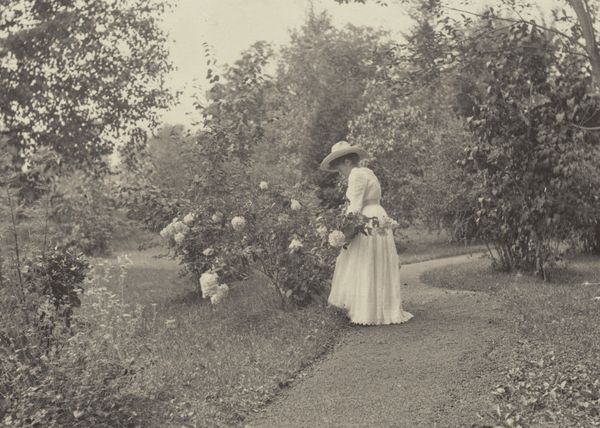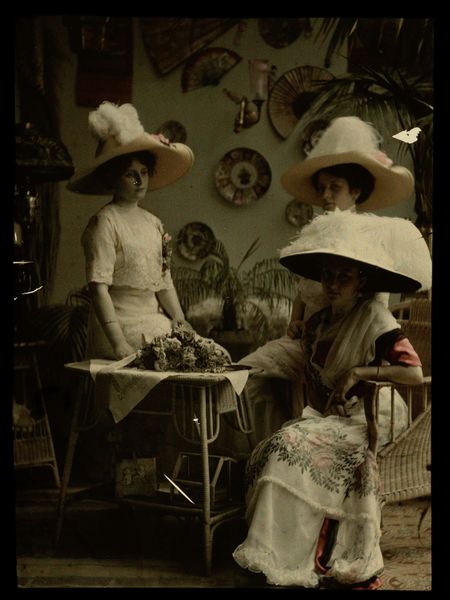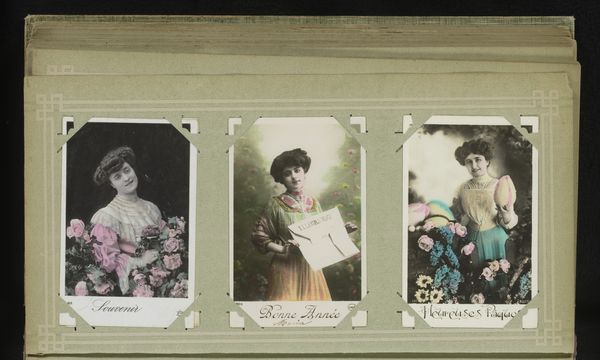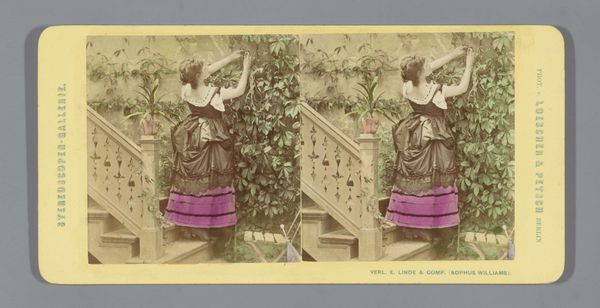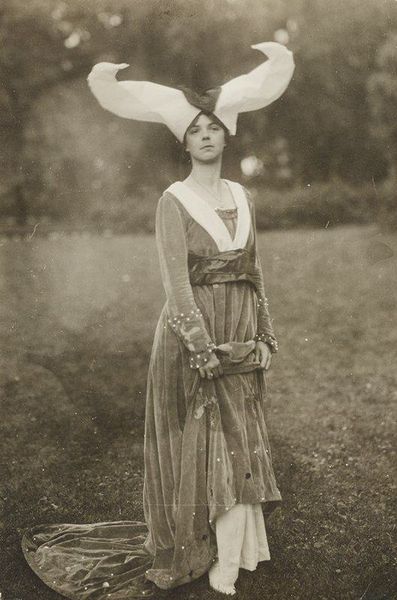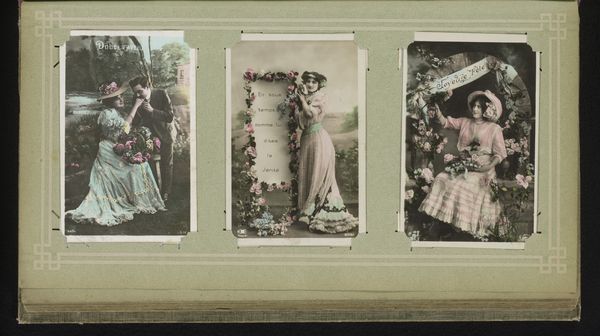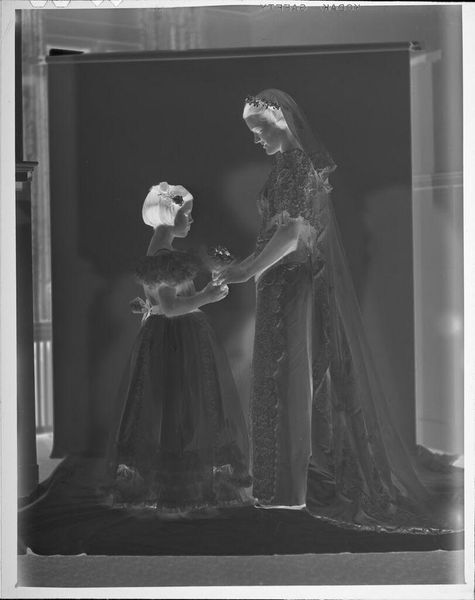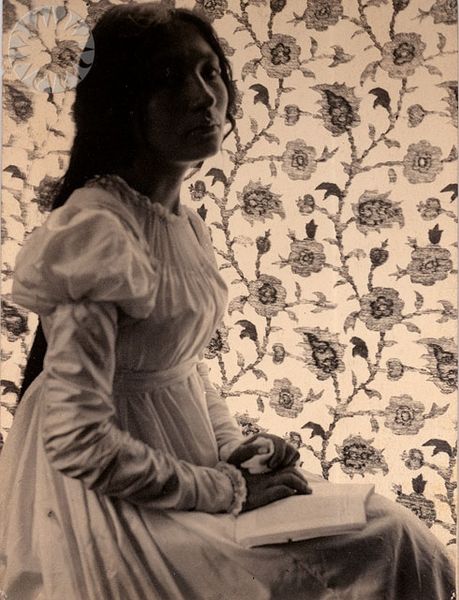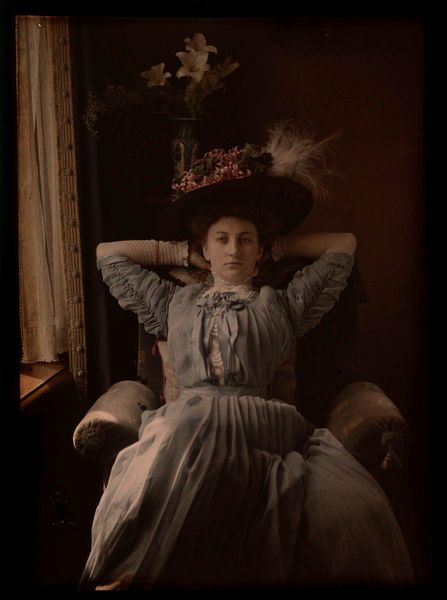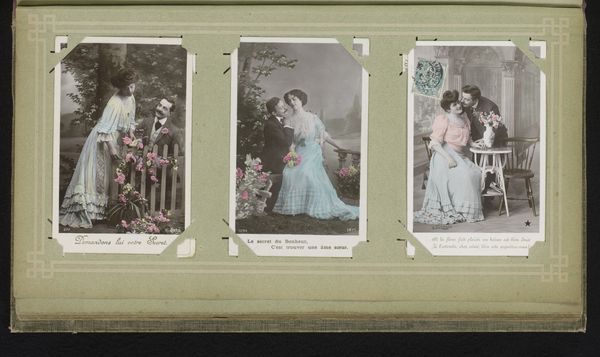
Dimensions: image: 16.5 × 11.6 cm (6 1/2 × 4 9/16 in.) overall: 27.8 × 21.2 cm (10 15/16 × 8 3/8 in.)
Copyright: National Gallery of Art: CC0 1.0
Curator: Let’s turn our attention to an early color photograph titled “Woman with Umbrella in Garden,” dating from around 1910. The photographer is, unfortunately, anonymous. Editor: It's a beautifully melancholic image. The tones are muted, lending it this air of wistful nostalgia, like a faded memory caught in the frame. Curator: Precisely. What interests me particularly is how this portrait engages with early color photographic processes. Think about the labor involved in hand-tinting photographs, transforming a black and white image into something resembling reality. The artistry resides in the touch. Editor: It makes me wonder about her story. Is she aware she’s being photographed? Or is she lost in a reverie, perhaps contemplating the fleeting nature of beauty, echoed in the transient blossoms around her? I love the hat, of course. And those gloves! It’s all so deliberate, posed yet perfectly serene. Curator: And consider how clothing functions as material culture. The cut of her dress, the size of her hat—all indicative of social status and economic realities of the time. Photography democratized portraiture, but that doesn’t erase the layers of class and power reflected in the subject's presentation. Editor: It's interesting; even though it's a photograph, it almost feels like an impressionistic painting. The light seems to soften the edges, blurring the lines between realism and artifice, and I would like to have been able to capture such a moment. Curator: Yes, it shares an aesthetic sensibility with Impressionist paintings. The photograph utilizes advancements in color photography to imitate painterly techniques, which perhaps blurs boundaries of production—manufacturing, labor, artistry… What can a photograph achieve that a painting cannot? Editor: Perhaps a kind of documentary truth? The camera records what exists, even if through a selective lens. And maybe, ultimately, the value of this photograph lies in the emotional resonance, regardless of its technical pedigree. The quiet solitude, the beauty… it transcends its historical context. Curator: Agreed. And perhaps, by attending to that emotional resonance, we can access richer insights into that context, acknowledging both the artifice and the genuine article. Editor: Exactly. It’s more than just an image, isn't it? It's a portal.
Comments
No comments
Be the first to comment and join the conversation on the ultimate creative platform.
